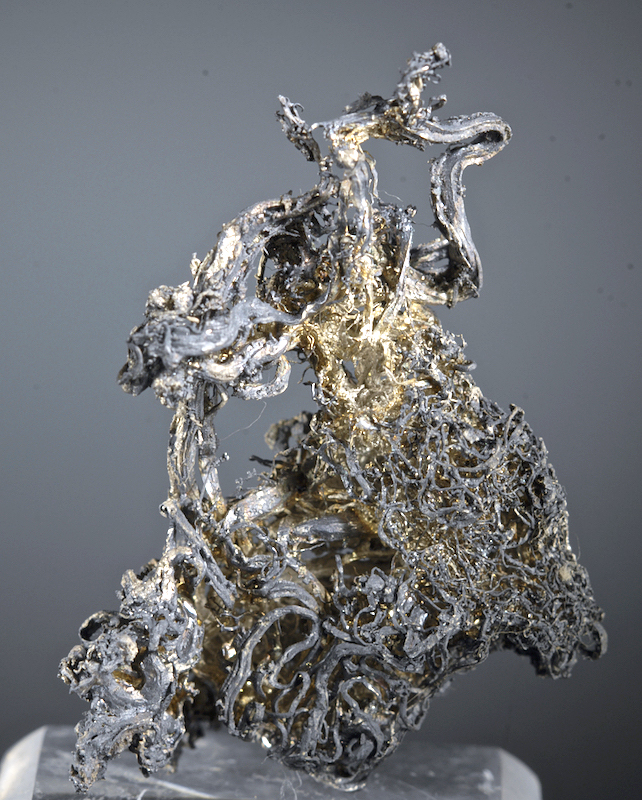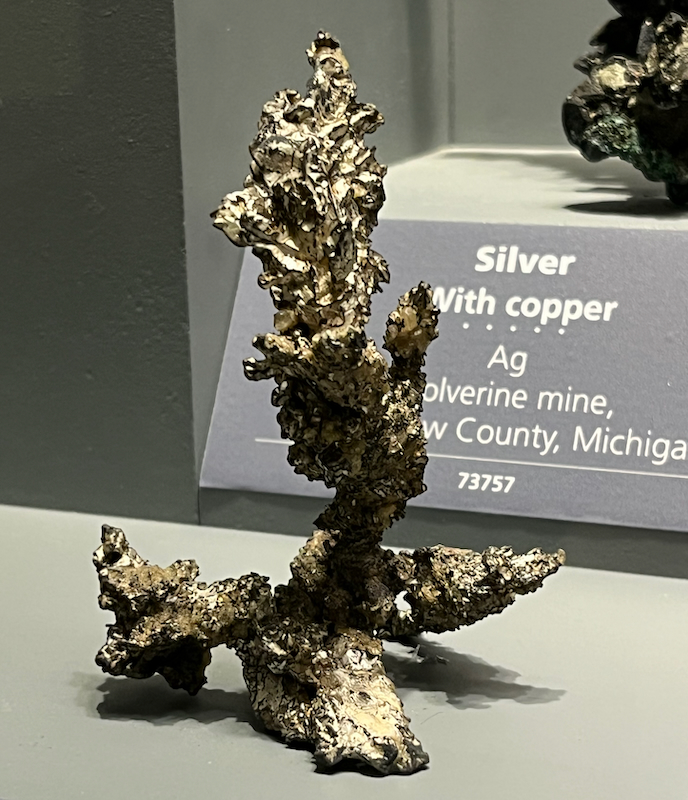Silver
The old Latin name for silver was “argentum.” That name lasted a long time because scientists loved using Latin words, so it even made it into the periodic table. If you see “Ag” there, that’s silver. What did “argentum” mean? Basically “white metal” to tell it apart from the yellow metal that was gold. Silver always seems to play second fiddle to gold; that is, it’s considered less important and less valuable, but it’s a very useful metal. It’s the best conductor of electricity of any metal, even better than copper. It can be made super shiny and has been used as the reflective part of mirrors for a long time. It reacts with chemicals in a certain way that allows it to be used to create the images on camera film, X-ray film, and photographic paper. It also has antibacterial qualities to kill germs, and some people think it even has health benefits. Oh, and you’ve probably heard of silverware? Yes, that used to be made all of silver, at least for people who could afford it. The one problem with silver was that it tarnished pretty easily, so you had to polish your silverware to remove the tarnish. Unlike iron, silver doesn’t oxidize (or rust), it, well, “sulfidizes.” That is, when exposed to air, which can have small amounts of sulfur in it, silver will react with the sulfur to create a coating of silver sulfide, which is the tarnish we’re talking about. Although silver may be less valuable than gold, it’s silver, not gold, that made Athens, in ancient Greece, such a superpower, because they were able to mine so much silver in the town of Laurium nearby.
| Formula | Group or Type | Shape | Hardness | Specific Gravity | Streak | Luster |
|---|---|---|---|---|---|---|
| Ag | — | Isometric | 2.5–3 | 9.6–12 | Shiny white | Metallic to submetallic or dull |


